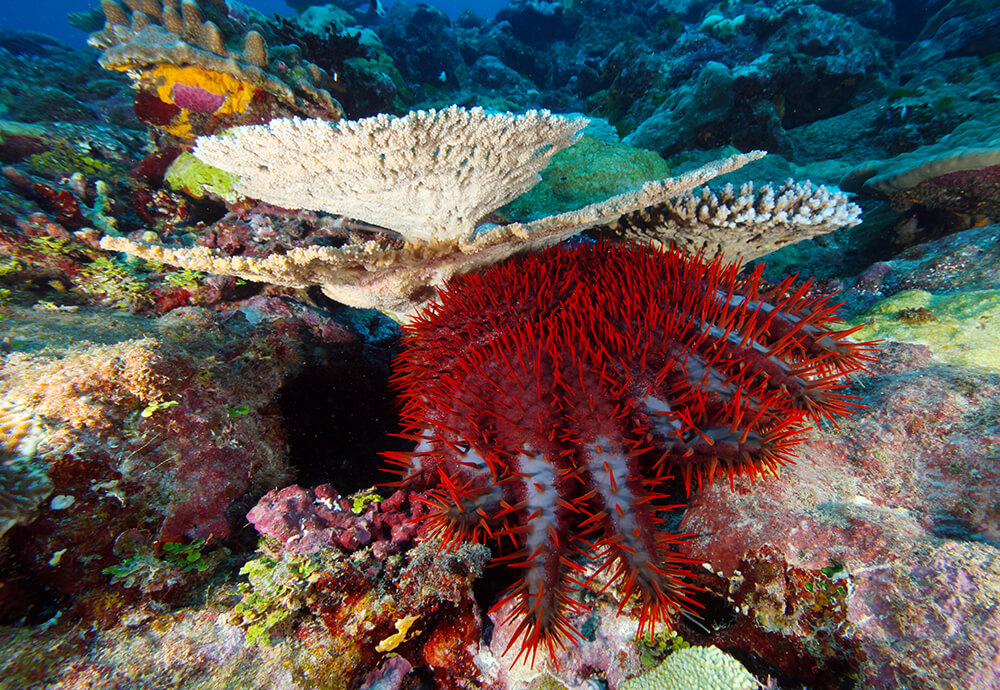Impacts on the reef
Natural disasters
American Samoa has had major natural disasters in the past few decades that have had an impact on the coral reef habitat that surrounds these islands.
Cyclones: Tropical cyclones passed through American Samoa from the 1990s through the early 2000s, causing damage to major portions of the reef at Fagatele Bay.

Crown-of-thorns starfish: In 1978 and 1979, an abnormally large number of crown-of-thorns starfish (Acanthaster planci), locally known as alamea, destroyed more than 90 percent of all living corals on Tutuila. The venomous crown-of-thorns starfish eat coral. While they are native to American Samoa, the surge in their population had devastating effects on the marine landscape. This natural disaster prompted the designation of Fagatele Bay as a national marine sanctuary.

Bleaching: A coral receives most of its nutritional needs from microscopic single-celled dinoflagellates called zooxanthellae that live within the coral tissue. A temperature change of just a few degrees can stress a coral and in turn cause it to expel its zooxanthellae. This is called bleaching because the coral appears white. Without the zooxanthellae the coral will struggle to survive as it depend greatly on zooxanthellae as a food source. Coral bleaching is not only caused by prolonged abnormal sea surface temperatures but also by other abnormal environmental changes and/or by various anthropogenic stressors, such as pollution. Extended periods of bleaching without coral recovery eventually leads to the death of a coral.

The coral habitat is adapted to change. However, typically recovery occurs over the span of decades. As long as the reefs are otherwise healthy, conditions can return to "normal" and the reef and its inhabitants will survive.
Human use of the land and sea can impact the recovery process, delaying or preventing it. Sediment resulting from poor land practices can smother and kill a reef and will prevent new corals from forming. Water pollution will also destroy habitats and inhibit coral growth.
The coral reef is a precious resource and it is our responsibility to protect it for future generations to enjoy. National Marine Sanctuary of American Samoa protects its coral reef resources for everyone, and works collaboratively with local, regional, and federal agencies as a member of the American Samoa Coral Reef Advisory Group.

